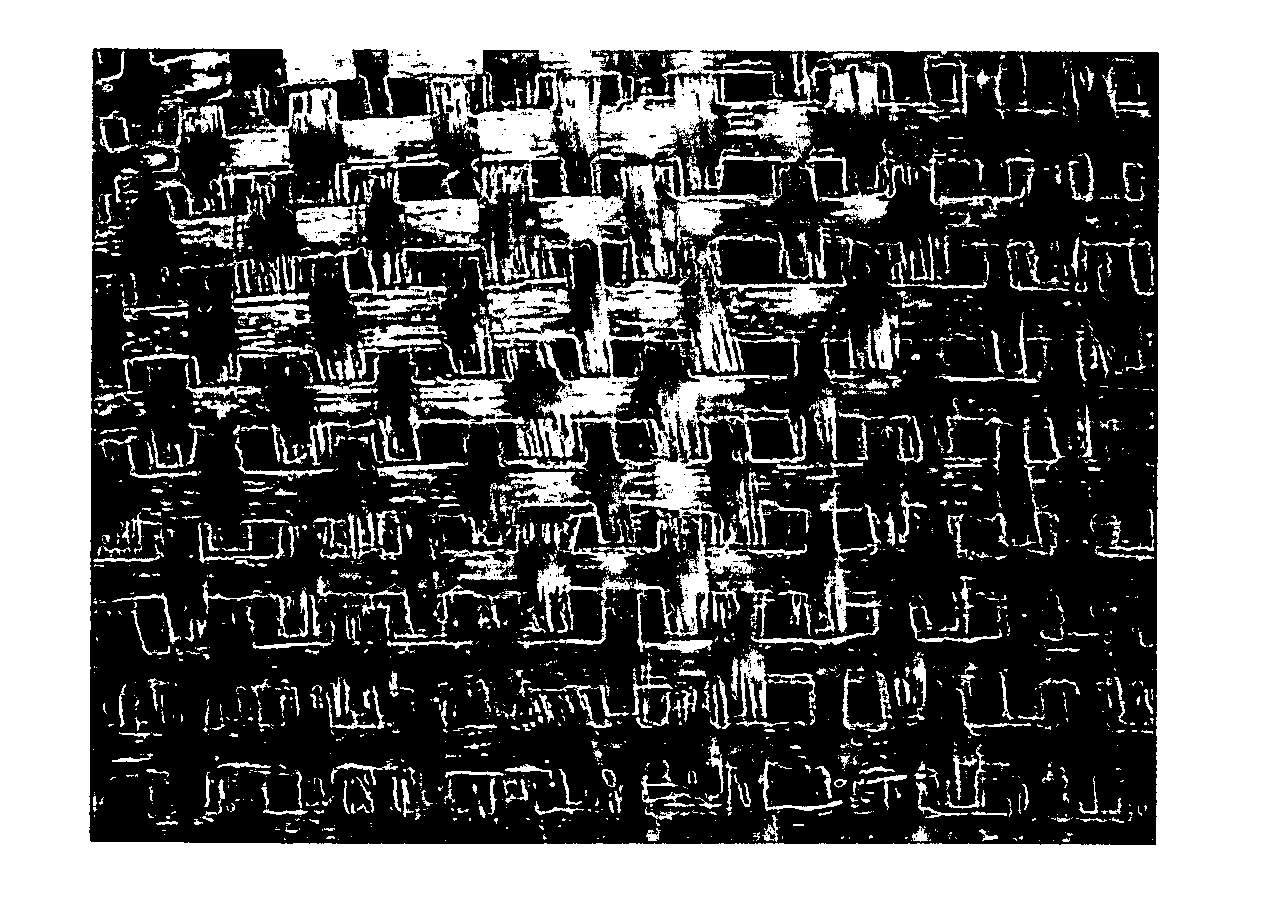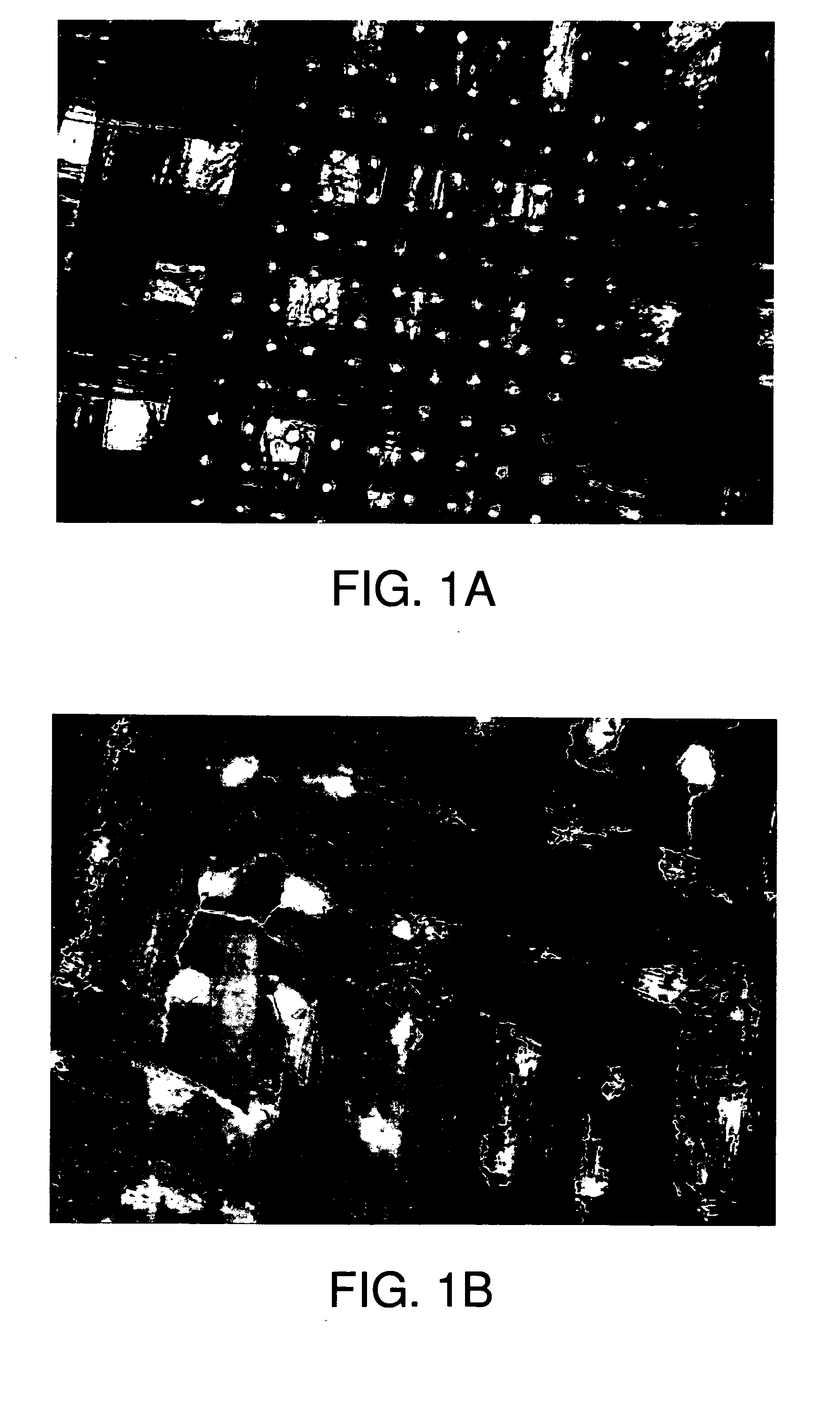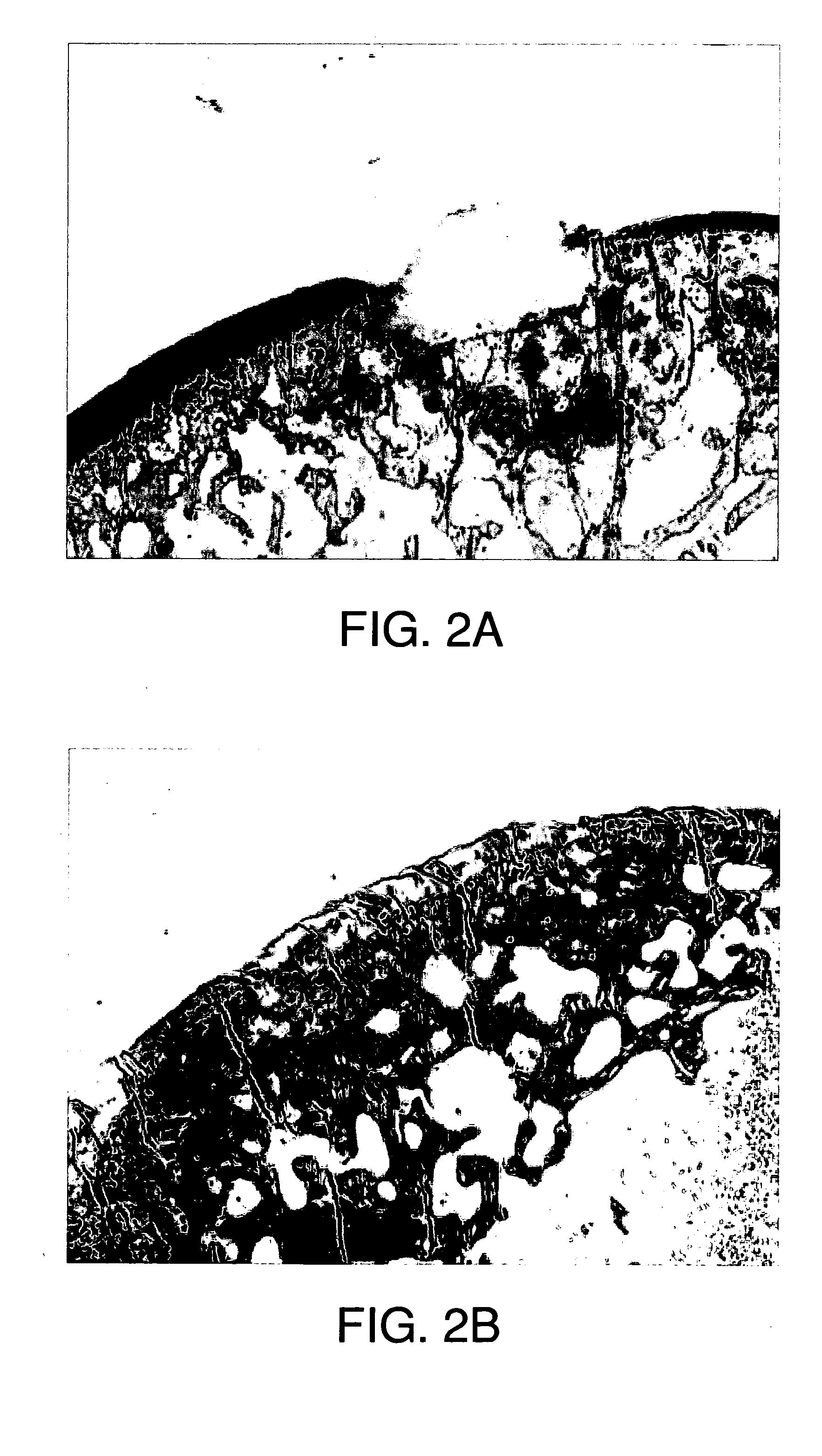Bioactive, resorbable scaffolds for tissue engineering
- Summary
- Abstract
- Description
- Claims
- Application Information
AI Technical Summary
Benefits of technology
Problems solved by technology
Method used
Image
Examples
example 2
[0037] The scaffolds fabricated using the method described in Example 1 were implanted in the patellar groove of rabbits for 4 and 12 months. Briefly, twelve New Zealand white rabbits were used. Two defects, 3.5 mm in diameter and 0.5 mm in depth, were created in the rabbit left and right trochlear groove by hand drilling. Four experimental groups were used: control (defect only, without implant), or defects filled with implants prepared according to any of three treatment schemes: woven scaffolds without subsequent treatment to transform the glass surface (unconditioned scaffold, or scaffold A), or woven scaffolds treated in either serum free or serum containing solutions (conditioned scaffolds or scaffolds B or C). The implants were retrieved at 1-month (n=6) and 3-month (n=6) and their histological evaluation was carried out by Skeletech, Bothell, Wash.
[0038] Histological evaluation (Skeletech (2001) Qualitative evaluation on histological sections of ...
example 3
Fabrication and Weaving of Glass Bundles
[0042] A bundle of glass filaments having a diameter of approximately 100-350 μm is desirable. In contrast, the usefulness of a bundle of thick glass having a similar diameter is limited because it is brittle and inflexible.
[0043] Bioactive glass fibers of 15-25 μm in diameter are pulled from a ˜1 mm aperture of a bushing at melting temperature of 1140° C. while being wound on a drum of 30.48 cm in diameter rotating at 275 rpm. Because the bioactive glass fibers are known to be fragile and difficult to handle, they are coated with polylactic acid (PLA) polymer dissolved in chloroform (2% w / v) to form bundles of 100-350 μm in diameter to enhance their handling properties. The PLA polymer serves as a binder for the glass filaments in the bundle. Biaxial weave is made with the glass bundles.
[0044] In two-dimensional weaving, almost all patterns that can be done with polymer yarns can also be done with glass bundles. Specific procedures for dif...
example 4
Fabrication of Scaffolds
[0047] We will develop a bioactive, fully resorbable, synthetic three-dimensional scaffold using weaving and three-dimensional assembly methods. The scaffolds will comprise a cartilage region and a bone region. They will have different porosity and pore size for either of these two regions. Other features of the scaffold include a highly porous and lactate-rich region for promoting cartilage regeneration and a bioactive matrix that stimulates bone tissue formation and repair. Flexibility of the scaffold will be achieved by using fine and flexible bioactive glass and polymer fibers (10-25 μm diameter) and a weaving method so that the scaffold can conform to appropriate topography of cartilage to be repaired. The scaffolds will then be sterilized and used in the Example 6.
[0048] An object of Example 4 is to develop multi-region three-dimensional bioactive, resorbable and porous scaffolds. In Example 1, the rabbit study, an excellent response to the scaffold w...
PUM
| Property | Measurement | Unit |
|---|---|---|
| Porosity | aaaaa | aaaaa |
| Porosity | aaaaa | aaaaa |
| Porosity | aaaaa | aaaaa |
Abstract
Description
Claims
Application Information
 Login to View More
Login to View More - R&D
- Intellectual Property
- Life Sciences
- Materials
- Tech Scout
- Unparalleled Data Quality
- Higher Quality Content
- 60% Fewer Hallucinations
Browse by: Latest US Patents, China's latest patents, Technical Efficacy Thesaurus, Application Domain, Technology Topic, Popular Technical Reports.
© 2025 PatSnap. All rights reserved.Legal|Privacy policy|Modern Slavery Act Transparency Statement|Sitemap|About US| Contact US: help@patsnap.com



